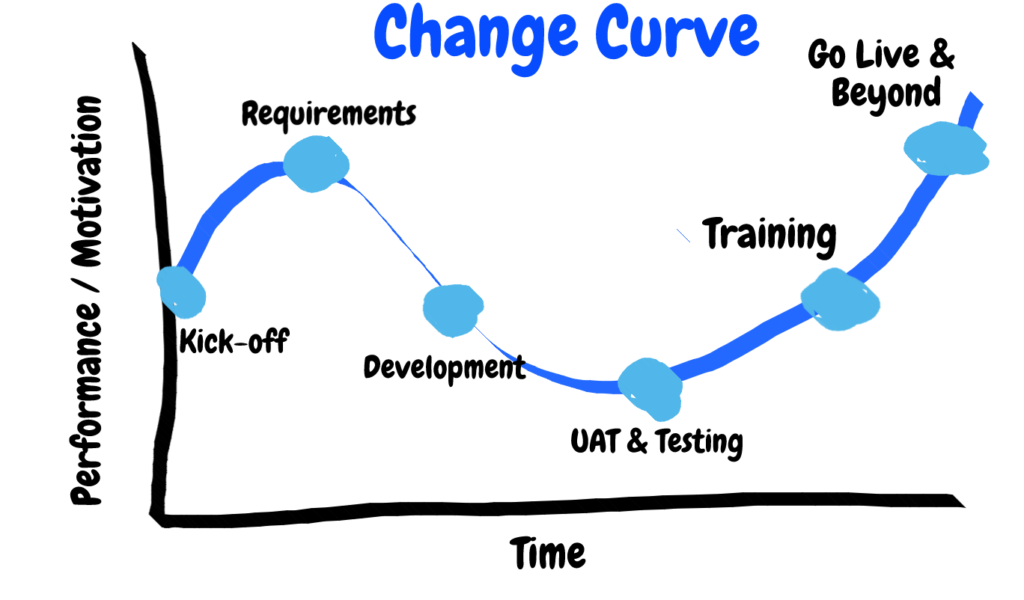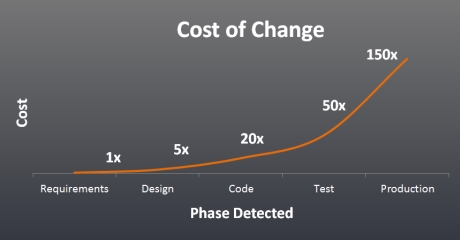Your cart is currently empty!
Tag: change curve
-

Three tips to avoid becoming our customer
- Make sure you understand your business processes before you ask someone else to automate.
- Ensure that your partner wants to understand your business processes.
- Have an evolving User Adoption Plan. This is a long term effort.
We’re a specialist firm focused on rescuing struggling Custom Software and Dynamics 365 implementations.
We truly love our customers and we believe the world would be better if companies like ours didn’t need to exist. Let’s work together to make that happen.Here are 3 tips that can help you avoid becoming our customer.
Know your businessWhen building automation into your business it’s vitally important to understand your business processes (and all edge cases) before asking your development partner to automate them. Only when you truly understand your business can you build automation that works the way you expect it to.
Companies that fail to fully understand their business before starting a software automation project (which includes Dynamics 365 implementation) often find that what they end up building does not match the reality of their business.
Realizing the need to change the software after it is built can cost up to 150 times the cost of understanding and planning ahead. Your most important work is to make sure you understand your business and can explain it to others who may know nothing about how your business works. Not always an easy task!
Work with an interested partnerMany partners are happy to do what you ask but not all of them will take the time to understand your business. When you choose to work with a partner who blindly implements what you ask them to do you may save a few dollars at the expense of an architecture that doesn’t match the realities of your business.
There are only two hard things in Computer Science: cache invalidation and naming things.
Phil KarltonOne of the most important pieces of building any software system is to ensure that the relationships between different types of data are modeled after the real world. If you work with a partner who doesn’t take the time or make the effort to understand your business, you miss out on this critical component of your system.
What you might end up with from a partner who isn’t invested in you is a system that looks like it works but because of how it is internally implemented, does not work in a way that will fit your business. Always choose a partner who takes the time to understand why your business works the way it does.
User Adoption is a journeyOne of the most overlooked areas of Dynamics 365 implementations (and other software systems) is User Adoption. That is, the process of bringing new users of the system online and helping them be effective with the tools they’re given.
There are many different types of people in the world and your organization and userbase will contain a wonderfully varied mix of them. Do you have a plan for helping them understand what you’ve built?
If you aren’t lucky enough to have an internal “champion” who’s taken on the role of guiding new users you’ll need a plan that helps those who are new to your platform come up to speed. This area, above all others, is one of the most difficult challenges of the implementation of any software system.
-

How to Adopt Change Management Best Practices into your Dynamics 365 Project: Understand Change as a Process
- Understand Change as a Process
- Create a Change Management Team
- Assess change readiness
- Include a Communication Plan as part of your CRM project
- Incorporate Change Management into your Training Plan
This blog kicks off a series on Change Management in Dynamics 365 projects and enhancements. When you are planning for a Dynamics 365 project or enhancement, change is coming to your organization. That change won’t be a one-time thing and then your users simply move on. To properly address change, you will need to be able to adapt and accept change as a process and not a one-time event.
Let’s look at a standard, simple CRM project life-cycle and overlay it with a standard Change Curve:

Dynamics 365 Project life cycle applied to a standard Change Curve - Project Kick-off: You’ve invited stakeholders, end users and management to help kick off the project! Expectations are all over the place: excitement, fear, confidence, uncertainty. Performance and motivation are at the start of the standard Change Curve.
- Requirements: You’re being heard by your Partner and Project team! All of your wish list items are being captured. Excitement is high!
- Development: Your partner and project team are busy building the system per requirements in the prior stage and working off of a mutually-approved project plan. As development begins and continues, you wonder if the requirements gathered were correct? Confidence begins to wane.
- UAT & Testing: You’re in the system doing User-Acceptance Testing. You’re running through test scripts, documenting where items pass and fail. Why are there failures? The Change Curve reaches its lowest point in performance and motivation for users.
- Training: As users go through training, they will increase the confidence with the CRM system, learning new areas and seeing new features. If you have followed some basic User Adoption tips, you have successfully used the technology of Dynamics 365 to create a system that will aid users in their daily job, building confidence. We’re heading back towards our starting point in the Change Curve of performance & motivation.
- Go Live & Beyond: You’ve returned to your starting point on the change curve and surpassed it!
Remember – change is a PROCESS. It is continuous. While the graphic above represents one cycle, be prepared for the curve to ebb and flow as your team continues to use and enhance your Dynamics 365 system
Stay tuned for more blogs in the Dynamics 365 – Change Management series! The next articles will focus on the following topics:
- Create a Change Management Team
- Assess change readiness
- Include a Communication Plan as part of your CRM project
- Incorporate Change Management into your Training Plan
Ready to learn more? Contact Reenhanced today to learn how we can assist with your project!
